| Lesson 5 | MTS and incoming connections |
| Objective | Describe how MTS processes incoming connections. |
MTS and Incoming Connections
The listener is a software program that runs on each remote node and listens for any incoming database requests.
When a request is detected, the listener may direct the request to:
- A dedicated server
- A multithreaded server
- An existing process or pre-spawned shadow process
Oracle MTS Connections
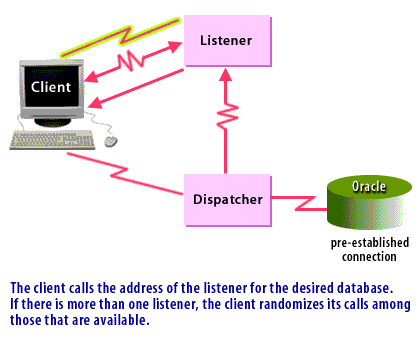

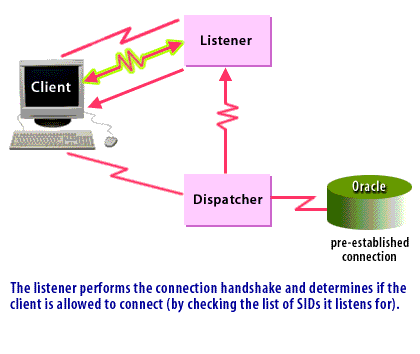
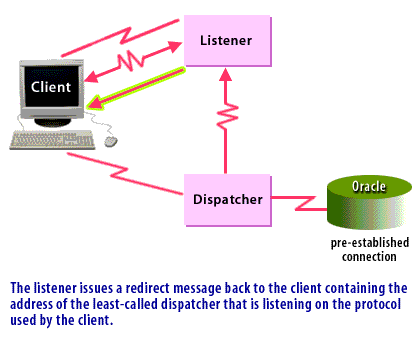
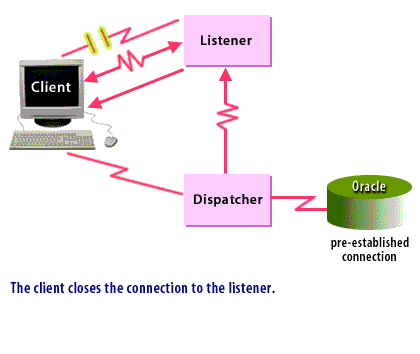
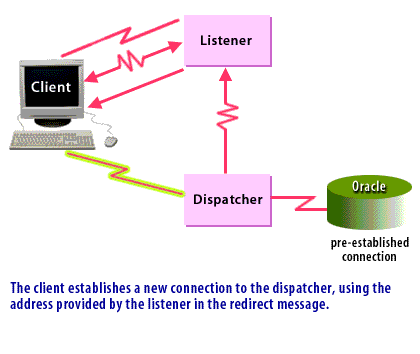
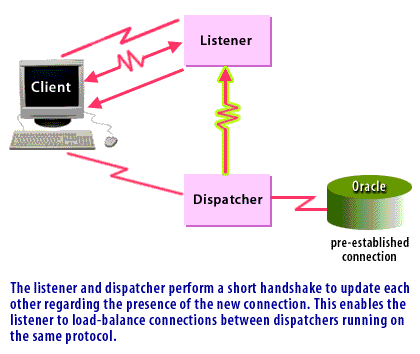
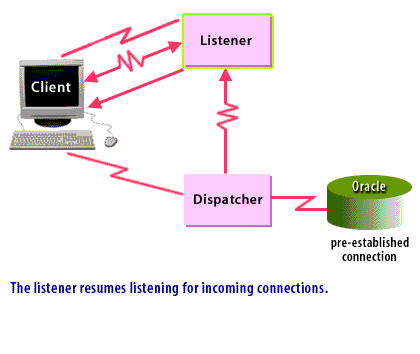
When an Oracle database has been configured as a multi-threaded server, incoming connections are always routed to the dispatcher.
However, a dedicated connection can be specifically requested by having
The next lesson discusses the architecture of MTS.
SERVER=DEDICATED in the CONNECT_DATA portion of the connect descriptor.
It is sometimes useful for transactions involving a high degree of activity to use a dedicated connection.The next lesson discusses the architecture of MTS.
Sending MTS Request
Before moving on to the next lesson, click the Exercise link below to test your understanding of the processes involved in directing a request to MTS.
Sending MTS Request
Sending MTS Request